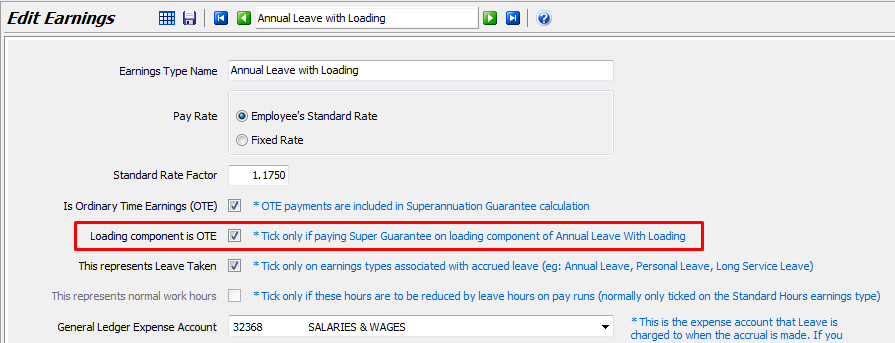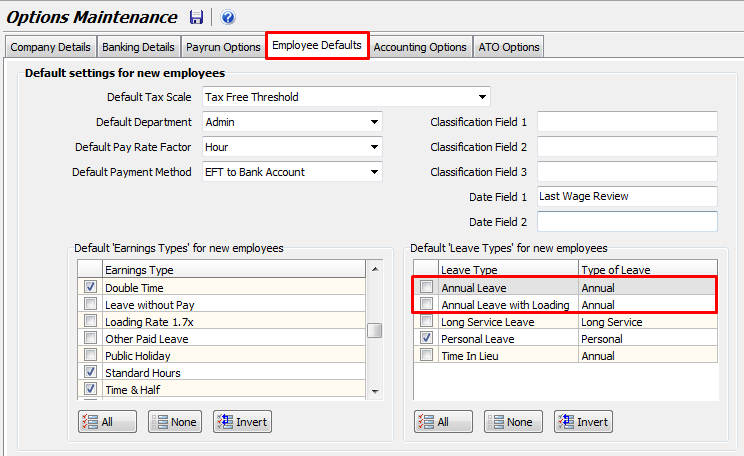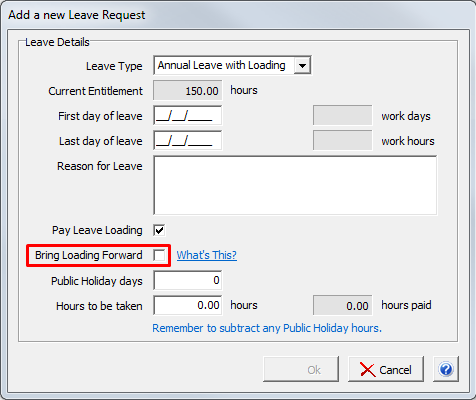In July 2018 it came to our attention that the ATO had apparently been inconsistent in its guidance as to whether the leave loading component of Annual Leave With Loading is deemed to be Ordinary Time Earnings and thus eligible for inclusion in the calculation of employer contributed superannuation.
Like most, we had been under the impression that the answer was a simple NO and accordingly Marlin HR has always excluded the loading component from the superannuation calculation.
The ATO has since updated its website to be consistent on this issue and advises that the answer can be YES or NO depending upon the reason for the leave loading.
If you have employees entitled to leave loading we recommend that you check with the ATO, your employer body or your tax accountant to confirm whether these employees are entitled to employer contributed superannuation on their leave loading.
According to the ATO website, employers should do the right thing going forward but there is apparently no obligation for employers to pay superannuation on leave loading retrospectively.
How to pay Super on Leave Loading
To cater for employees that are entitled to superannuation on their leave loading, we have added this ability from version 2.0.5 of Marlin HR.
A new checkbox on the Earnings maintenance screen gives you control over whether to include the leave loading component in the superannuation calculation.
We have implemented the new checkbox as unticked by default so that there is no change unless you establish that you do need to pay super on leave loading and tick the checkbox.

This checkbox should only ever be ticked on your 'Annual Leave With Loading' earnings type and only then if employees with this entitlement in Employee Maintenance are entitled to superannuation on the leave loading component. Regardless of whether this checkbox is ticked, superannuation will continue to be paid on the main Leave component as this is controlled separately by the 'Is Ordinary Time Earnings (OTE)' checkbox above it.
If all of your employees (that are entitled to leave loading) are entitled to super on leave loading, tick the 'Loading component is OTE' checkbox.
If none of your employees (that are entitled to leave loading) are entitled to super on leave loading, untick the 'Loading component is OTE' checkbox.
If some of your employees (that are entitled to leave loading) are entitled to super on leave loading, you will need two 'Annual Leave With Loading' earnings types - one with the 'Loading component is OTE' checkbox ticked and one with it unticked - and two 'Annual Leave With Loading' leave types and you will need to apply the new one to each employee (on the Entitlements tab in Employee Maintenance) that is entitled to super on their leave loading.
See the Mixed Leave Loading Inform guide for more details.
How to change the default (SG on Loading or not)
You may want to change the default setting that is automatically applied to new employees that you add to the system.
From the menu, select System > Options and select the Employee Defaults tab
Tick the Leave Type that you want to become the default and then click on Save.

Some payroll officers prefer to tick the leave type that is most commonly added to new employees (to save keystrokes), while others prefer not to tick or add any leave types by default (preferring to add the correct ones manually on each new employee).
How Leave Loading is taxed
As of 1 July 2012, leave loading is taxed as it is paid to the employee, in the same manner as Standard Hours.
There is no longer a separate withholding scale for employees who are entitled to leave loading, employees that used the 'Tax Free Threshold - LL' scale or 'Tax Free Threshold - No LL' scale previously now all use the 'Tax Free Threshold' scale.
If you pay leave loading as a lump sum, you must use Tax table for back payments, commissions, bonuses and similar payments including lump sum payments in arrears (NAT 3348) to calculate withholding.
If you pay leave loading on a pro-rata basis, then simply add the leave loading payment to earnings for the period to calculate withholding.
The 'Maximum Leave Loading' field on the Payrun Options tab (under System > Options) is now defunct.
If your employee is being paid leave loading along with their holiday pay prior to July 1, 2012, it is treated as follows.
The first $320 in a year of income does not need to have any PAYG amounts withheld as it is already factored into the PAYG withholding tax tables and is taken into account when determining the amount to withhold from normal pay every pay period. Any amount over $320 should be added to, and included in, the holiday pay and treated as above.
The amount above which leave loading becomes taxable is entered into Marlin HR by selecting System | Options from the menu toolbar, then selecting the Pay Run Options tab. The relevant field description is Maximum Leave Loading ($).
How to pay Leave Loading in advance
For employees setup with an "Annual Leave with Loading" leave entitlement, there is a "Bring Loading Forward" checkbox on the Leave Entry popup.

In situations where an employee's leave period commences in the middle of a pay period and ends in the middle of another pay period, ticking this checkbox will enable you to pay them all of their leave loading in advance and pay them a full normal pay upon their return.
Your weekly pay cycle is Monday to Sunday and an employee requests annual leave from Wednesday to the following Tuesday inclusive (i.e. 38 hours).
You create the Leave Request with the correct dates as normal. The Leave period (38 hours) is partly in the first week and partly in the second week.
If the Bring Loading Forward checkbox IS NOT ticked
The pay run for week 1 will pay the actual Standard Hours and Leave Hours and leave loading according to when the employee was at work and when they was on leave.

The pay run for week 2 will also pay the actual Standard Hours and Leave Hours and leave loading according to when the employee was at work and when they was on leave.

This means that the employee is not paid all of their leave loading in advance unless you process their week 2 pay run in advance.
To process the week 2 pay run in advance you need to decide whether to:
- Pay the non-leave days in week 2 as Standard Hours in advance (employee gets no pay at the end of the week in which they returns, there is also the possibility that the employee could be away sick on one or more of those days); or
- set the Standard Hours to zero for the non-leave days (when the employee returns you need to process an Adjustment Pay to pay them for those days).
If the Bring Loading Forward checkbox IS ticked.
The pay run for week 1 automatically replaces the Standard Hours in the first week with the Leave Hours from the second week (so that all the leave hours and leave loading are paid in the first week).

The pay run for week 2 automatically replaces the Leave Hours in the second week with the Standard Hours from the first week (so the employee gets a full pay for the week in which they returns to work).

This means that you only need to process the pay run for week 1 to pay the employee all of their leave loading in advance and pay them a full week upon their return.
Is Annual Leave Loading payable upon Termination?
Yes.
This is despite the contrary views of employer organisations and the fact that even some modern awards explicitly or implicitly provide that the loading is not payable upon termination.
The confusion surrounding this issue has revolved around the interpretation of section 90(2) of the Fair Work Act introduced in 2009.
The Fair Work Ombudsman supported the interpretation that employees who were entitled to leave loading during their employment were also entitled to it on annual leave payouts on termination, then in March 2015 the Federal Court held that the 17.5% annual leave loading is payable on annual leave termination payments and this will be the case even if an award or enterprise agreement expressly states otherwise (this is because they must comply with the National Employment Standards and section 90(2) of the Act is part of the National Employment Standards).
Employees that were entitled to the 17.5% leave loading during their employment and weren't paid the leave loading on their annual leave payout at termination, have been underpaid.
Employees are able to seek to recover past underpayments for a period of six years.
If you have any queries or concerns we recommend that you seek appropriate legal advice.
